
How to Read Music Part 1 Music Notation School of Composition
MUSIC VALUES CHART NOTES whole note (1) half note (1/2 ) quarter note (1/4) eighth note (1/8) sixteenth note (1/16) RESTS whole rest (1) half rest (1/2) quarter rest (1/4) eighth rest (1/8) sixteenth rest (1/16) ©2003 by Education World® Education World grants educators permission to reproduce this page for classroom use.
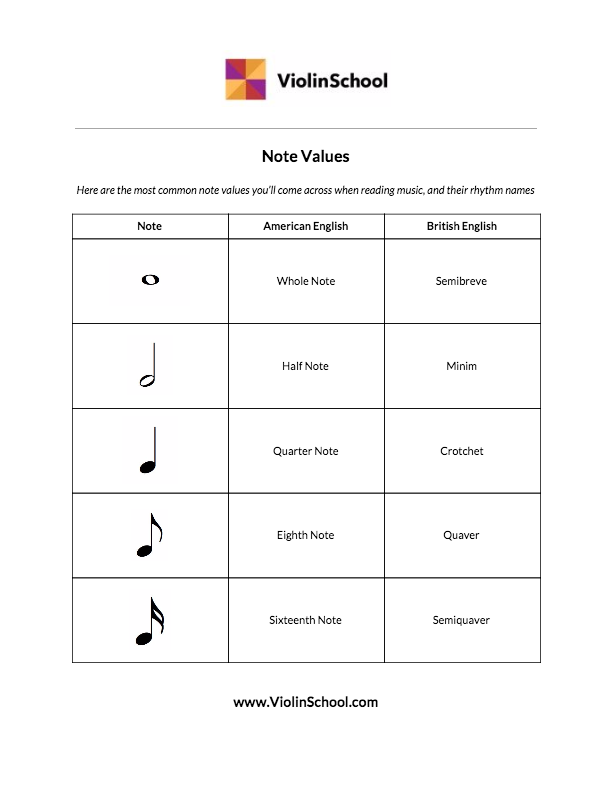
Musical Note Values Chart
Notating Rhythm Chelsey Hamm; Mark Gotham; and Bryn Hughes Key Takeaways Notes consist of several different components, including a notehead , stem , beam , and flag . Common note values include the whole note , half note , quarter note , eighth note , and sixteenth note . Common rest values include the whole rest , half rest , quarter rest ,
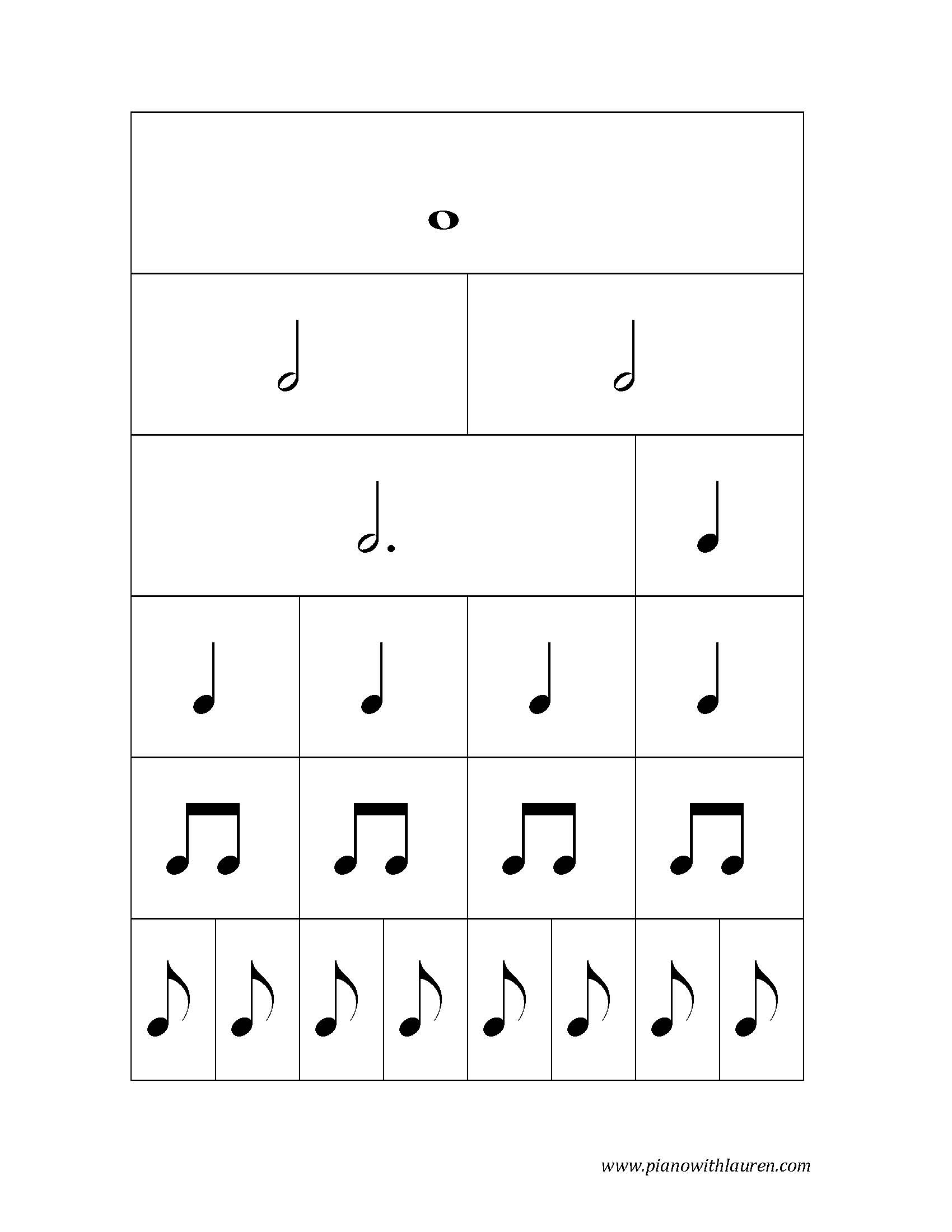
note values sample Piano with Lauren
Learning point: Note values let us know when a note should be played and how long a note should be held for. Here are some of the most common rhythms and how many beats they get in a 4/4 measure. A whole note gets four beats. A half note gets two beats. A quarter note gets one beat. An eighth note gets half a beat.
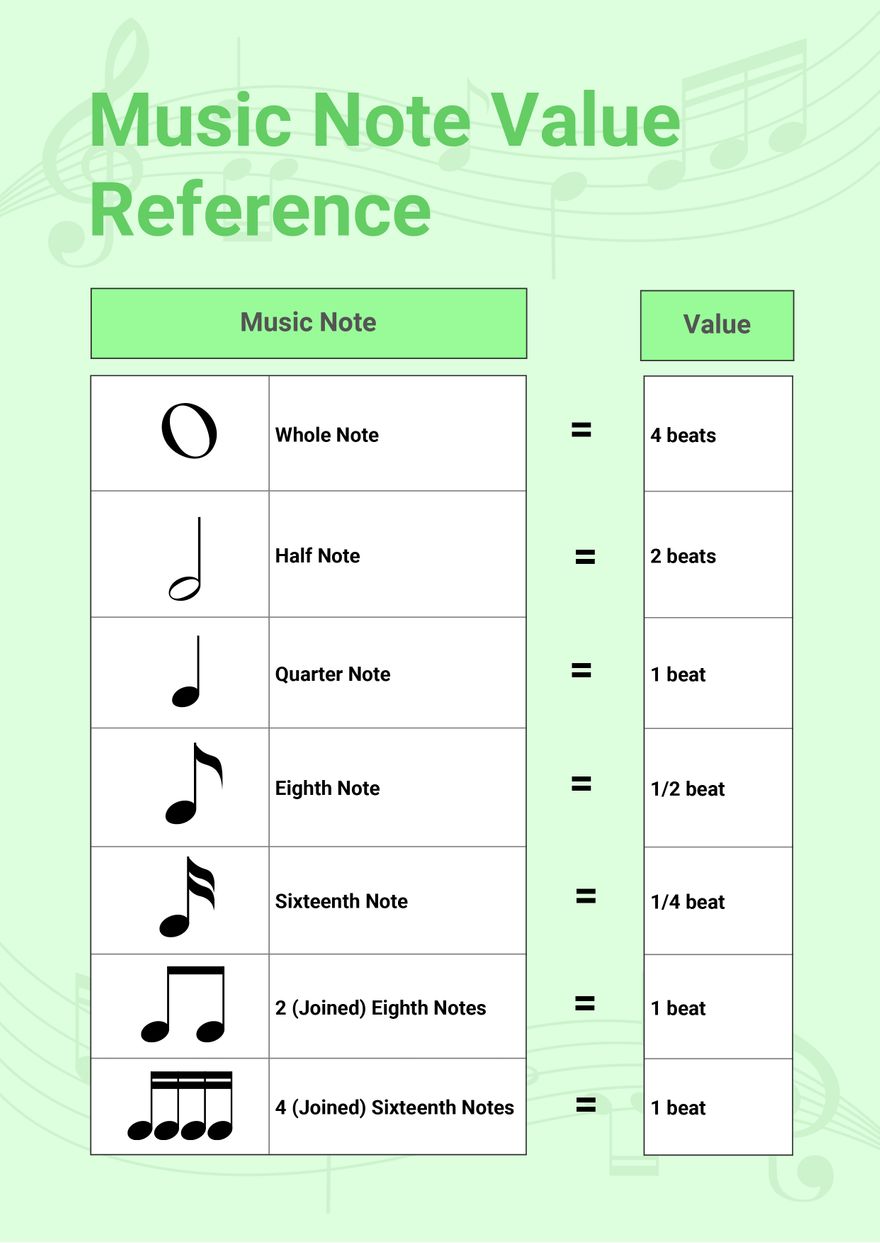
Free Music Note Value Chart Download in PDF, Illustrator
Note Values in Sheet Music with examples | Simplifying Theory How to read the Note Values? Now that we've learned the representation of notes in sheet music, the time has come to study the note values. How can we know the time/duration of each note or chord in sheet music? By learning note values! See them below: The note values
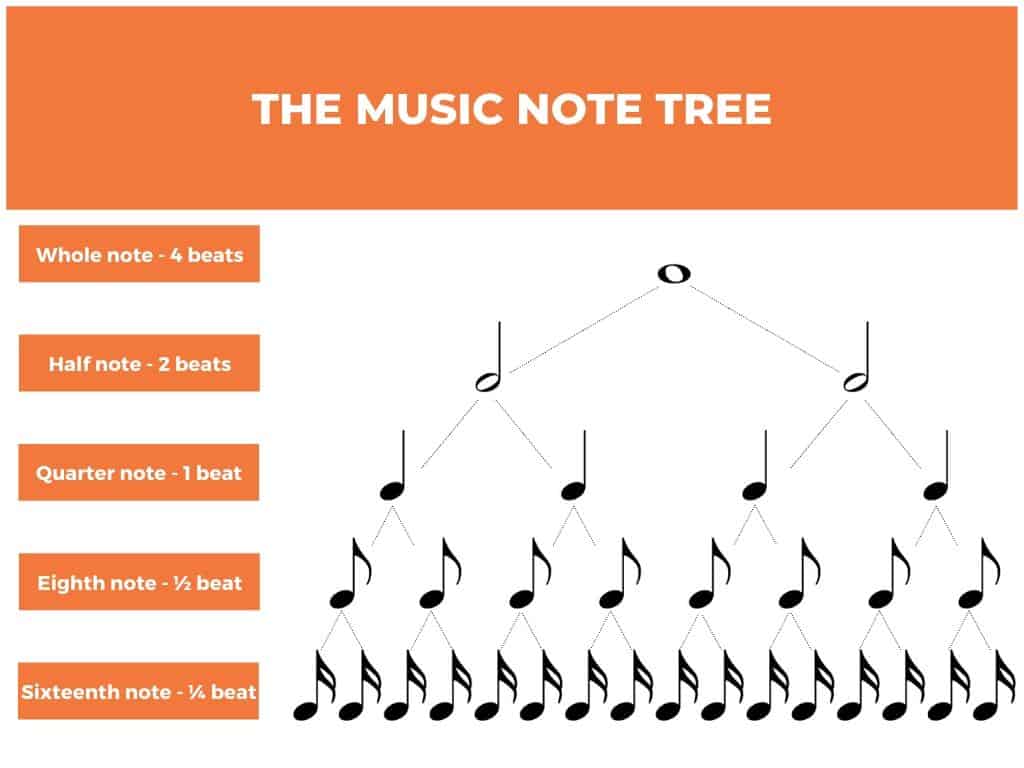
The Music Note Tree (Or Pyramid)
It is the design of the note that tells you its duration, in the same way as the position on the staff tells you the pitch. So each music note on a stave gives you two pieces of information, pitch and duration. This page focuses on the duration of each note. The Rhythm Tree
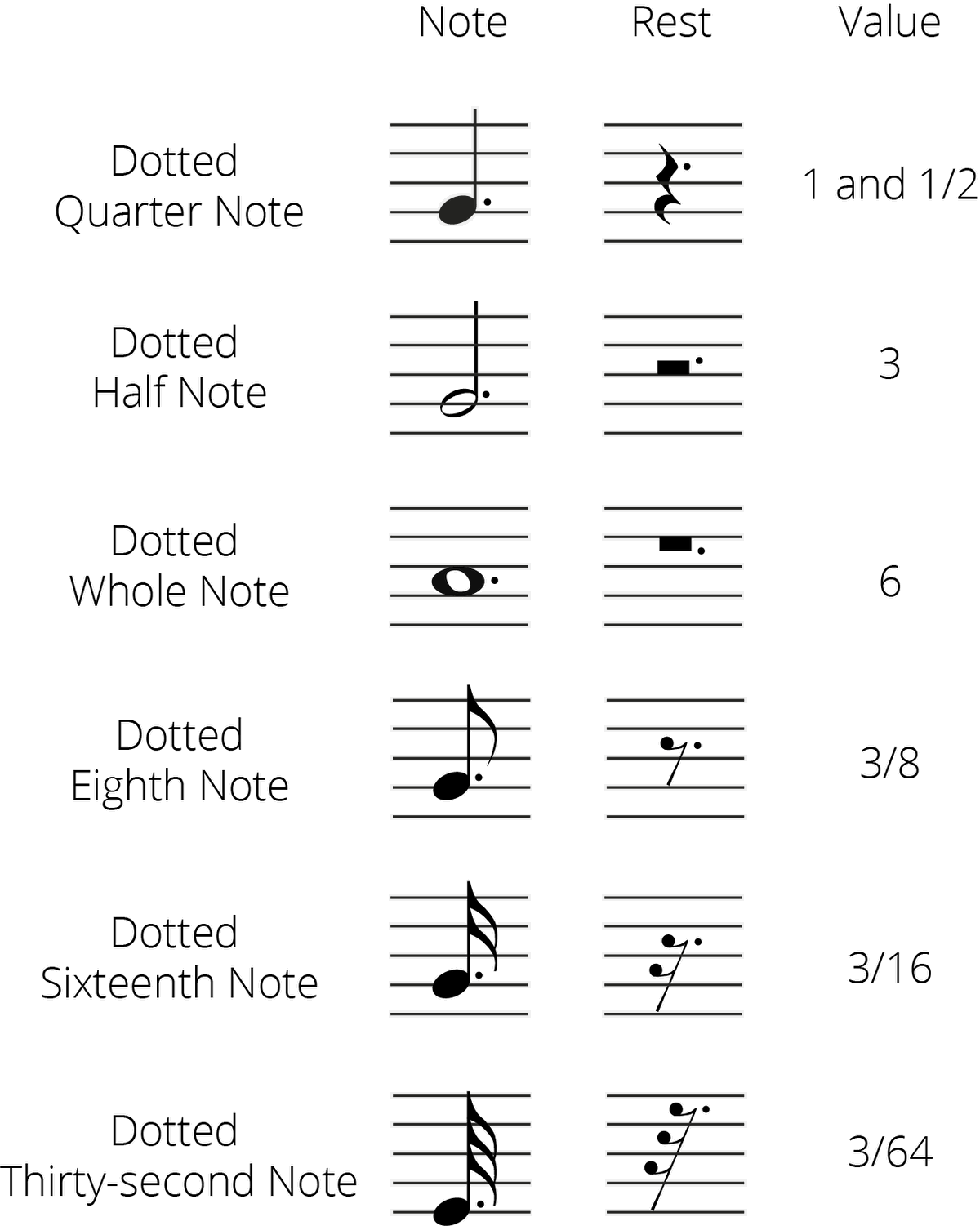
Grade 5 Music Theory Notes you need to Know Jade Bultitude
February 5, 2022 Are you in the beginning stages of learning music notation? Do you want to learn how to read music. You are in the right place. In this tutorial, I will show you about Note Values: How To Read and Count Them. By the end, you will be able to read, write, and count several types of rhythms using these note values.
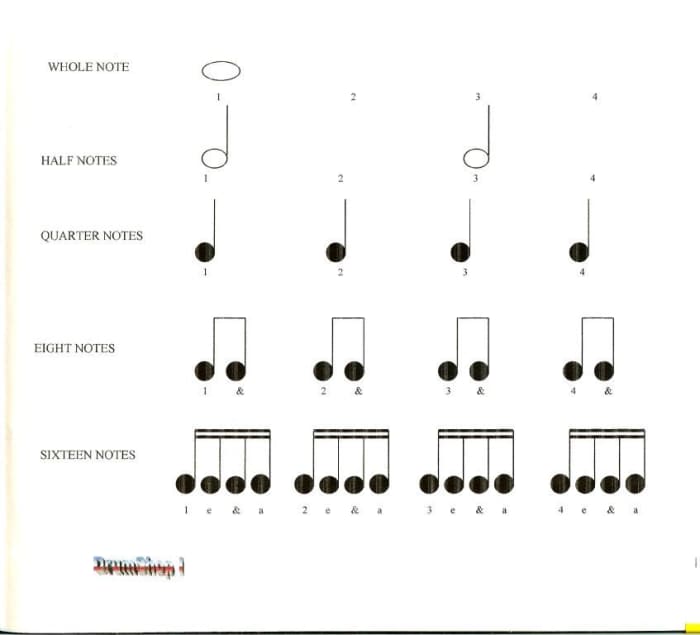
Teaching Children Note Values in a Fun Way WeHaveKids
Note Values Every note has a rounded notehead which designates the pitch. Other differences, such as whether a note has a stem or is solid black, have to do with note value, which is length of time to hold a note. The symbol for a whole note is a circle. A whole note is held for 4 beats. The symbol for a half note is a circle with a stem.

Music Note Names And Beats drum scores Basic Understanding of Note
Knowing the names of all these notes, as well as their time values, how to draw them, and what the parts of the notes are called, is key to being able to read music well. In this post, we'll cover all these types of notes in music to help you on your way to learning how to read music. Let's get started. Music Note Names and Their Time V alues

Note values dannywalker9
Here are your answers! In this music theory lesson for beginners you'll learn how to divide the notes, and how to understand exactly how long (or short) a note or rest can be! What a Musical Note Can Show Us A musical note can show us two things: Duration: The duration, or how long or short the note is. This is also called note value.
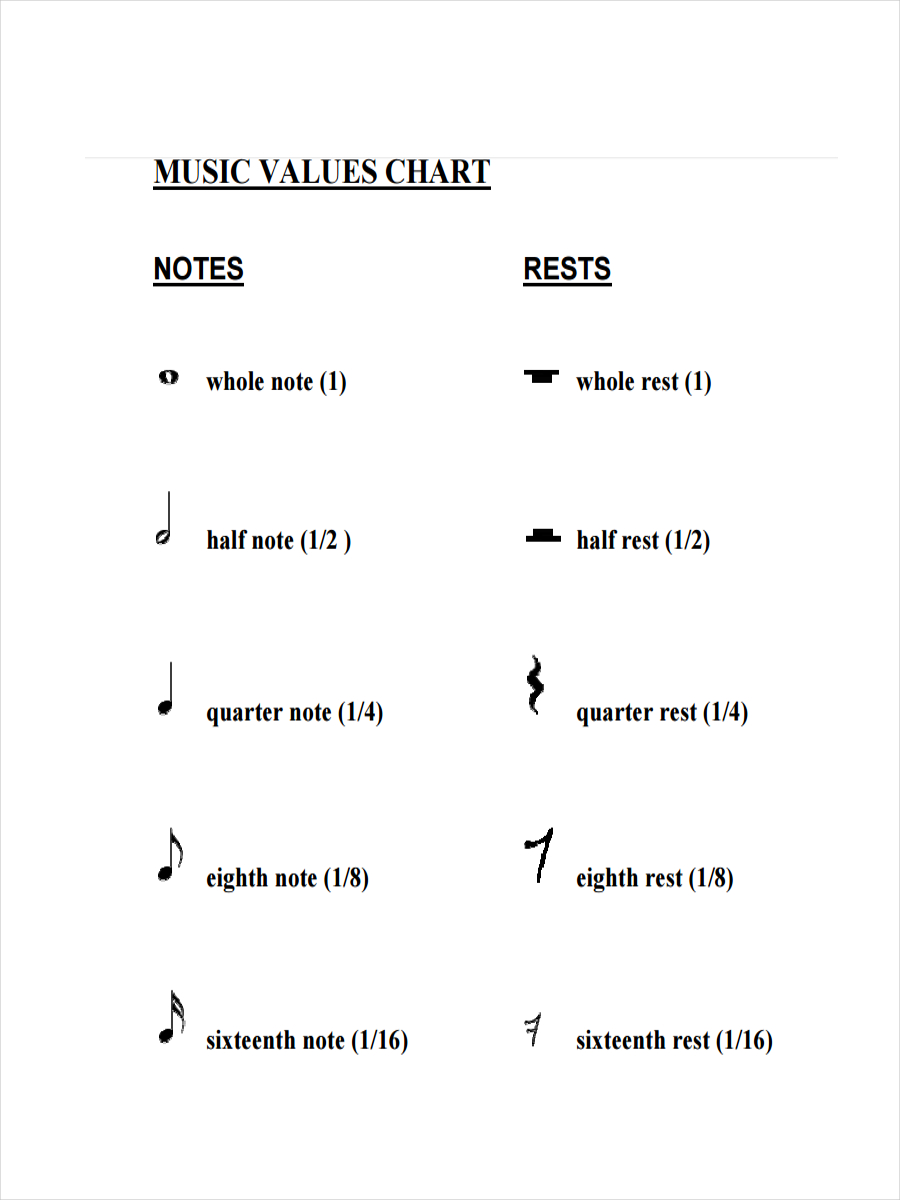
Music Chart 7+ Examples, Format, Pdf Examples
Note Value Chart Teaching Resources | Teachers Pay Teachers You Selected: Keyword note value chart Sort by Relevance Rating Price (Ascending) Most Recent Featured Common Core Aligned Social Emotional Learning Bundles Formats PDF See All Formats See All Formats All Formats Easel Activities Easel Assessments All Google Apps All Microsoft
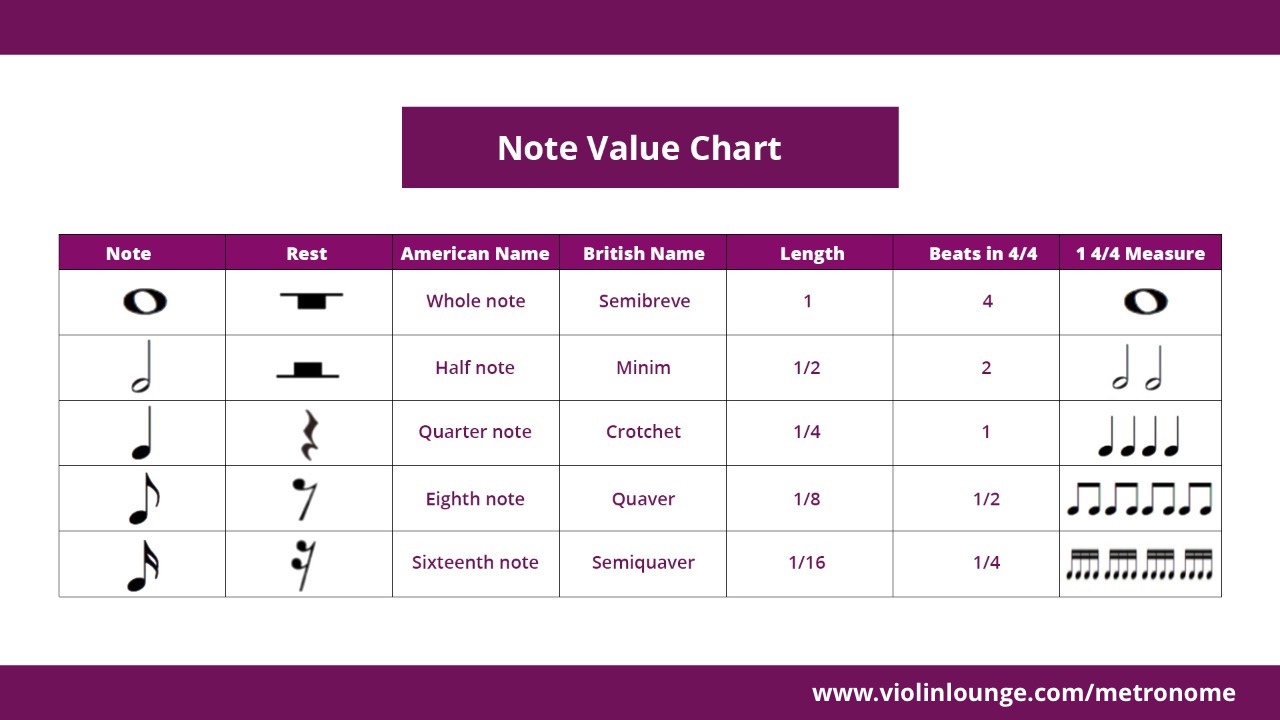
How to read rhythms and note values in sheet music Violin Lounge
This chart is an easy to use reference guide that will show you the notes on the staff, and where they are on the piano keyboard. Click Here to download a PDF version of the Piano Note Chart. The staff is made up of two clefs, the treble clef and the bass clef. Each clef tells the musician which hand they should use to play each note.

Chart Of Music Notes And Rests
Learning about notes values is fun! Photo by Kathleen Holyoak 1. Music Notes Have Different Values Explain: Music is made up of different kinds of notes that show us how long the sound will last. Do: Hold up an 8" x 10" size of paper with a picture of a whole note. 2. A Whole Note is Equal to Four Counts
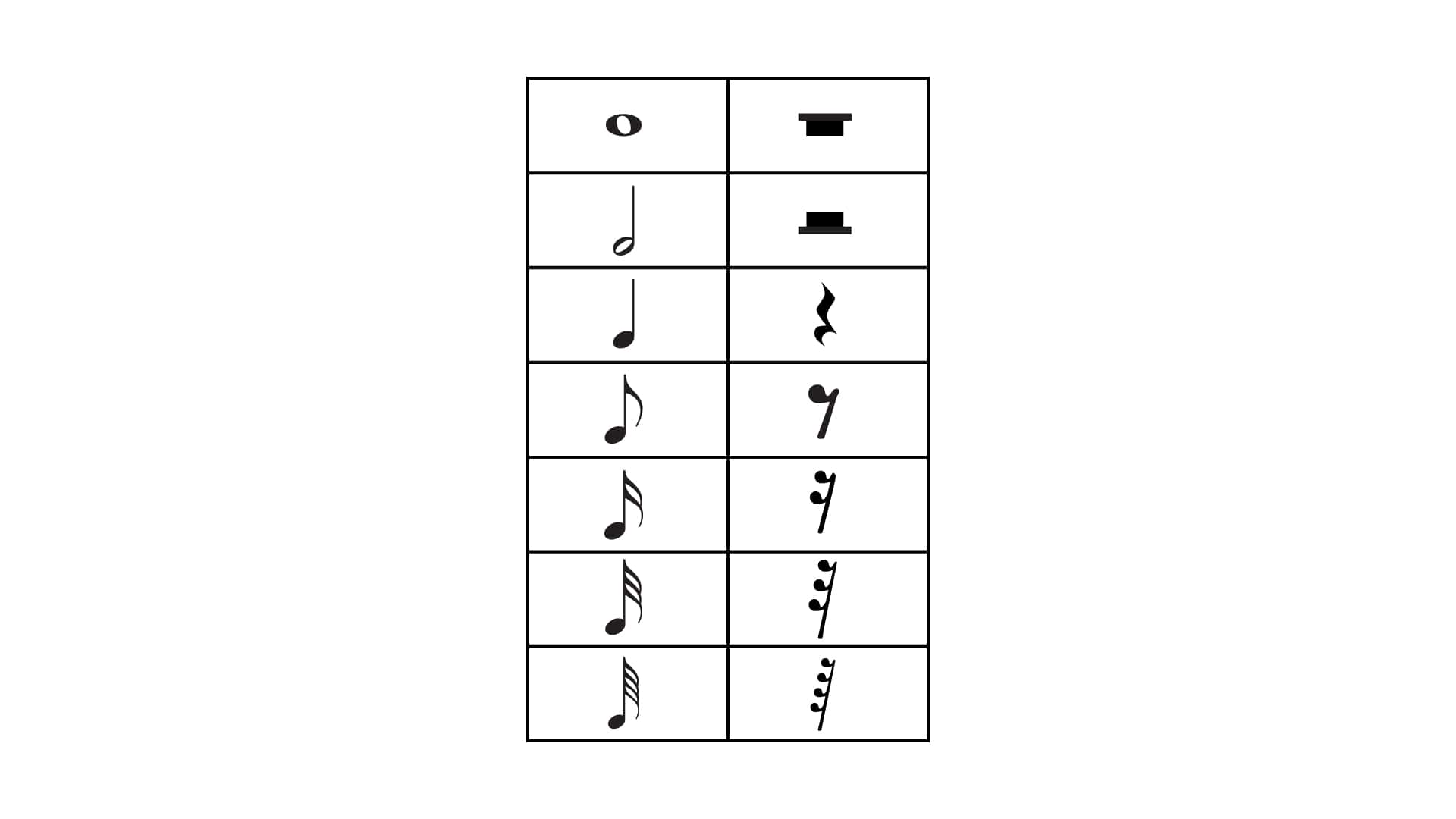
+7 Note Values to Read Music [American and British names]
Note Lengths Summary. Here is a summary table of the note lengths and how they relate to each other: You can see that the quarter note (crotchet) has a filled notehead, a stem, but no tail. If you un-fill the notehead and remove the stem the note length gets longer. If you add more tails to the stem, the note gets progressively shorter.

how to read music Note Values Tree School of Composition
The quarter note = $.25, half note = $.50, dotted half note = $.75, and whole note $1.00. Have a discussion with students about the relationship between the values. Tell students that each note value indicates how many beats the musician plays. Show students the "Making a Beat" chart on slide 8 of the presentation, Note Values.
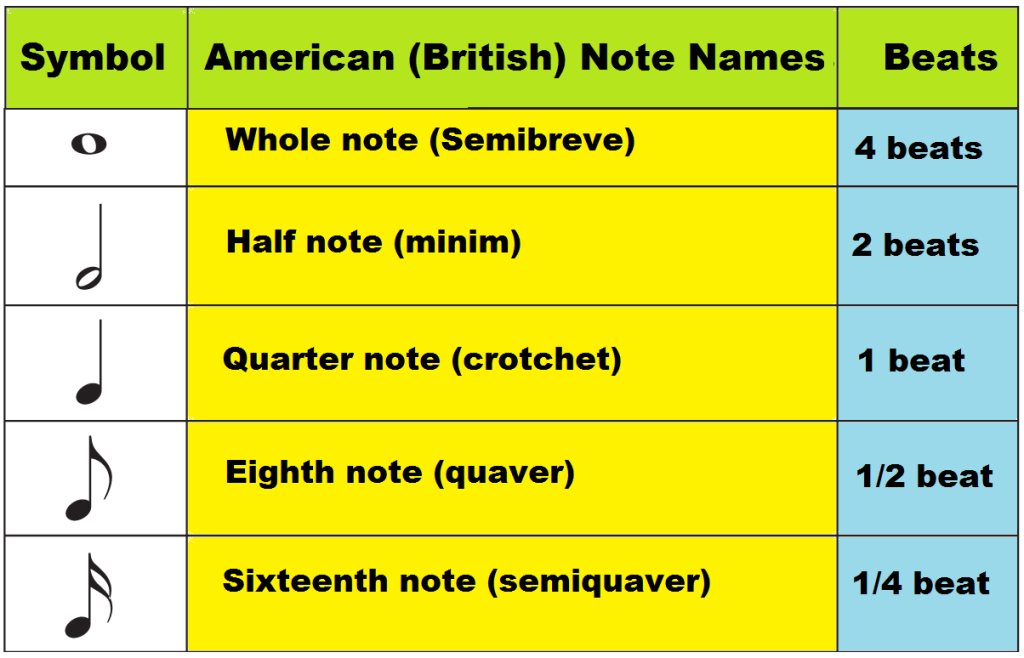
Music note names on staff and piano keyboard, time values and symbols
The music note tree is a great visual way to understand the relationship between all the different types of music notes. Getting to grips with it will help you when learning about note values and time signatures. In this post, I'll share what the music note tree is as well as how we use it to visualize the time values of notes. Let's take a.

What is Rhythm in Music? Jooya Teaching Resources
In music notation, a note value indicates the relative duration of a note, using the texture or shape of the notehead, the presence or absence of a stem, and the presence or absence of flags/ beams /hooks/tails. Unmodified note values are fractional powers of two, for example one, one-half, one fourth, etc.